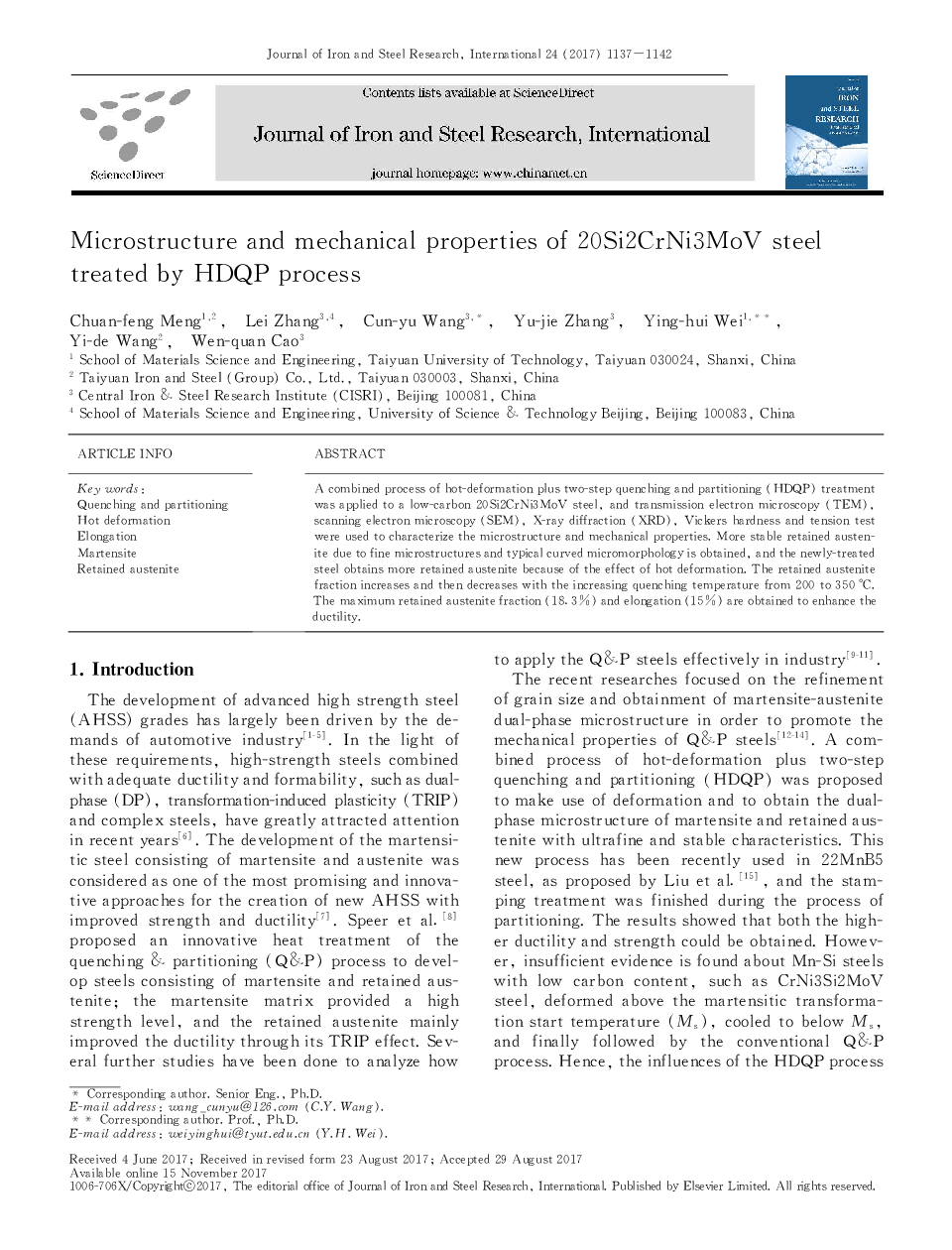| Article ID | Journal | Published Year | Pages | File Type |
|---|---|---|---|---|
| 8004154 | Journal of Iron and Steel Research, International | 2017 | 6 Pages |
Abstract
A combined process of hot-deformation plus two-step quenching and partitioning (HDQP) treatment was applied to a low-carbon 20Si2CrNi3MoV steel, and transmission electron microscopy (TEM), scanning electron microscopy (SEM), X-ray diffraction (XRD), Vickers hardness and tension test were used to characterize the microstructure and mechanical properties. More stable retained austenite due to fine microstructures and typical curved micromorphology is obtained, and the newly-treated steel obtains more retained austenite because of the effect of hot deformation. The retained austenite fraction increases and then decreases with the increasing quenching temperature from 200 to 350 °C. The maximum retained austenite fraction (18. 3%) and elongation (15%) are obtained to enhance the ductility.
Related Topics
Physical Sciences and Engineering
Materials Science
Metals and Alloys
Authors
Chuan-feng Meng, Lei Zhang, Cun-yu Wang, Yu-jie Zhang, Ying-hui Wei, Yi-de Wang, Wen-quan Cao,
